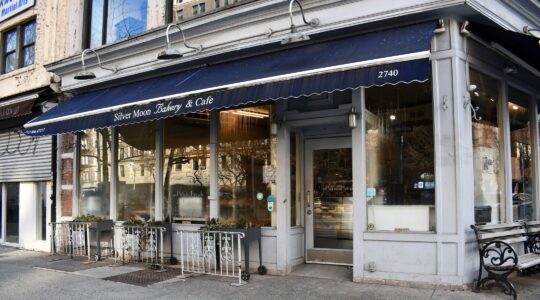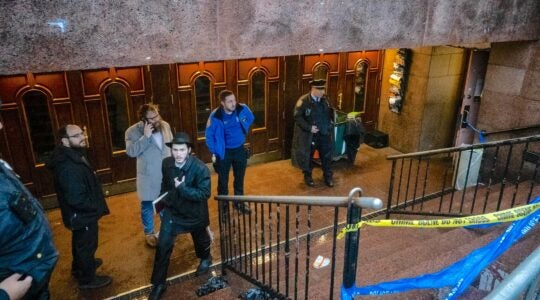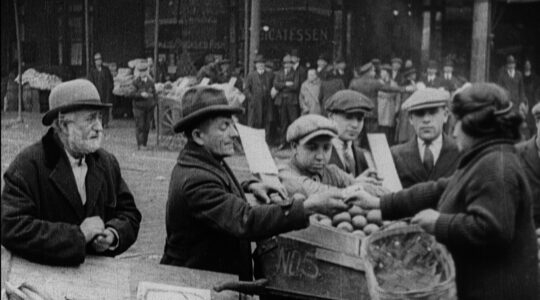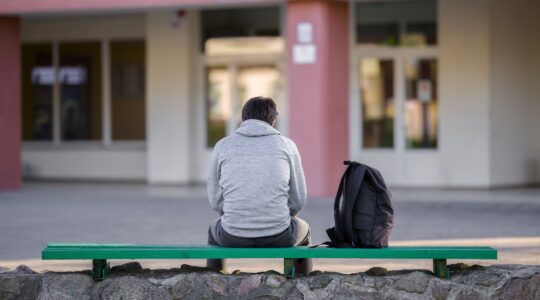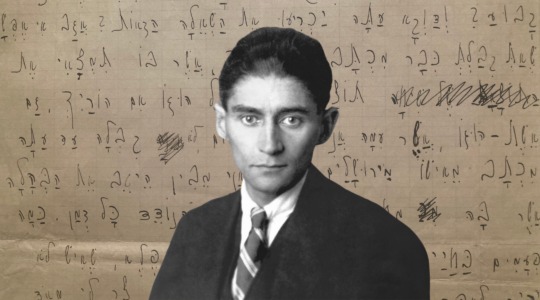A month that has already seen terror alerts for New York subways, along with ongoing alerts for numerous public spaces, will also see local synagogues dancing into the streets on Simchat Torah.
The dancing may seem spontaneous on the night of Oct. 25 and the next morning, but many shul officials have already begun checking in with their local police precincts, who in turn are awaiting approval from the police intelligence division downtown.
One Jewish official told The Jewish Week that he hasnít heard of any particular threats, ìbut I think itís too early to know; it can change in a day, with intelligence information closer to the event.
îAlthough there has not been trouble on Simchat Torah in recent years, there have been terrorist threats to local Jewish neighborhoods, said the official. ìThe people who did the first World Trade Center bombing said that they first considered Williamsburg and Crown Heights,î he said.
Those bombers, led by Sheik Omar Abdul Rahman, were also linked to the assassination of Rabbi Meir Kahane in Manhattan in 1990. In 2000, on the eve of the High Holy Days, Molotov cocktails were thrown at the Conservative Synagogue Adath Israel of Riverdale. After the attacks of 9-11, some public celebrations on Simchat Torah were canceled. Itís not clear whether it was because police were stretched too thin or whether there were specific threats against the Jewish community.
Rabbi Barry Katz, spiritual leader of Adath Israel, said, ìClearly security is in the back of our mind. We always consult with the police and our own security people, but at the same time, to curtail Simchat Torah and all the other things that bring charm and fullness to our lives would be a shame. There has to be a balance.
îRabbi Katz said few nights of the Jewish year were as ìelectricî as Simchat Torah, as shuls of different denominations and spiritual fashion literally come down different sides of the street to unite after the seventh hakafah, or final round of dancing with the Torah.
Unity is also a motivation in Kew Gardens Hills, even if it is only Orthodox unity. Rabbi Moshe Rosenberg, spiritual leader of Congregation Etz Chaim, one of four Orthodox shuls near 73rd Avenue and 147th Street, said, ìIn the Orthodox community we have so many ways of trying to distinguish ourselves from each other. Dancing with Torahs in the street reminds us that weíre really all on the same page. Itís good for people to see the different rabbonim dancing together.î
Rabbi Meir Fund of the Flatbush Minyan said that dancing in the street with the Torah is ìan American thing, to the best of my knowledge,î a post-war phenomenon, probably originating in the 1960s.ì
Thereís something appealing about the idea of simcha overflowing boundaries,î said Rabbi Fund. ìWe did it for years. I finally stopped it.î Not because of security but because ìon the street Simchas Torah loses its focus, its kedusha [holiness]. It was disruptive. Some people went outside, some didnít. I didnít see the purpose. I didnít get it.î
Rabbi Fabian Schonfeld of the Young Israel of Kew Gardens Hills, too, suggested that Simchat Torah presented more of a spiritual problem than a security problem: ìItís the nature of the day; a function of all the waiting around,î as every single person in the shul gets called up to the Torah, one by one. People get their aliyah and go outside to socialize.îSeveral shuls have banned liquor from their buildings.
On the Upper West Side, Rabbi Naftali Citron of the Carlebach Shul recalled when West End Avenue was closed to traffic as several synagogues joined for hakafot, a situation that ìI donít think is happening anymore,î due both to security concerns and community objections to the great din of noise late into the night from thousands of people drifting up and down the avenue.ì
Our shul was always very popular,î said Rabbi Citron, ìseemingly a last destination for everybody, whether the avenue was open or closed. A lot of people come to our shul after their shulís over; we go to three in the morning. Thousands of people come in and out over the course of the evening.î
Rabbi Citron has been in touch with his local precinct, but added, ìWe have our own security. Itís crowd control, mostly, but if there is any [outside] trouble, they can deal with that as well.î With a limited number of Torahs and so many wanting to dance with one, Rabbi Citron follows the unique practice of his great-uncle, Shlomo Carlebach, who would empty the shelves and hand out chasidic texts, Talmuds and other sacred volumes, trying to match the ìsoulî of the book to the soul of the individual.All over the city, synagogues will try to overcome the darkness of the times with the spirit of the day. n
The New York Jewish Week brings you the stories behind the headlines, keeping you connected to Jewish life in New York. Help sustain the reporting you trust by donating today.
